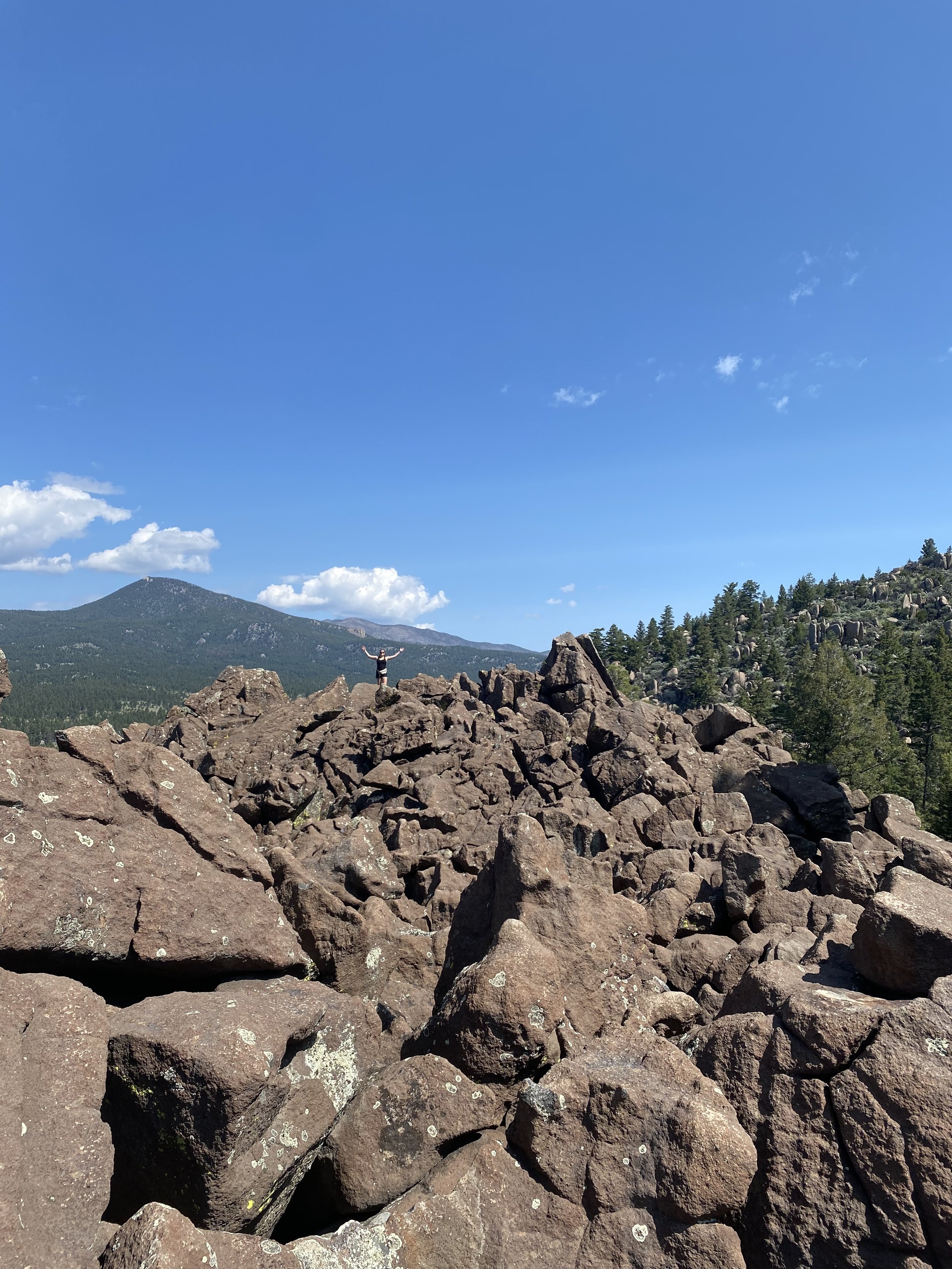
Ringing Rocks: The Hidden Gem of Pipestone
Once you drive up the winding mountain road to Ringing Rocks, you will find a rack of hammers for visitors to use. There are no trails surrounding the boulders and no other indicators as to how to explore the area, so it is up to each visitor how they wander over the rocks. Due to the size of the rocks, it is advised that curious tourists be very careful as they climb the rocks toward the top of the pile, hitting the boulders as they go.
I first visited Ringing Rocks in 2018 on a trip to Pipestone with my friends. Although I was born and raised in Butte and visited Pipestone multiple times for camping trips, I was one of the few that had never heard of Ringing Rocks. We drove to the site in my friend’s Ford truck, as it was the only vehicle we had between all of us that would make it up the winding, rocky road. When we arrived at the rocks, I was immediately in awe of the impressive size of the rocks.
We each took one of the hammers provided and walked to the base of the mound. From there, each of my friends began to climb in a different direction, hitting the rocks along their way up. Only about one out of every three of the rocks ring when hit with metal, so scientists have concluded that it is not just the composition of the rocks that accounts for the ringing noise. Rather, it is suspected that the specific formation of the boulder pile and the erosion the rocks have undergone over time add to the unique natural occurrence. This theory seems to be the most viable, since if a boulder is taken from the area, it will no longer ring. Although we may not know exactly why the rocks ring, they still bring curious visitors to the site.
The rocks themselves were much bigger than I had thought, which made them difficult to climb, especially while holding onto my hammer. After struggling to climb over and through the intricate rock structure, I eventually made it to the top of the pile along with my companions. The view of was breathtaking; listening to the sound of sonorous ringing while taking in the picturesque mountains in the surrounding area was serene.
To further understand how Ringing Rocks has impacted other visitors during their visit, I spoke with an MSU senior and frequent visitor, Maddie Wilder. “I first visited the rocks with my friends this past summer,” Wilder explained. “The road up the rocks was sketchy but definitely worth it.”
She went on to talk about her experience climbing the rocks, as well as offer some advice to others who are considering going. “I definitely got a few bruises while climbing around the rocks, so be prepared for that. I’d also recommend bringing something to keep your belongings safe. I almost lost my phone in the cracks in the rocks a few times.”
The Pipestone recreation area is well known for its dirt biking trails and camping spaces, but Ringing Rocks seems to be the hidden gem of this place. For anyone interested in visiting this natural wonder, it is recommended to drive up the road with a high-rise vehicle, to bring good shoes and a secure place for your belongings, and to go with a spirit for adventure.
Ringing Rocks: The Hidden Gem of Pipestone
Story by Emma Field
Photos by Emma Field
Located in the Pipestone recreation area roughly 18 miles east of Butte, MT, Ringing Rocks is a natural phenomenon that has been attracting tourists for decades. The site is a large pile of tan rocks and boulders tucked in the middle of scenic mountains near the Continental Divide that make a ringing sound when struck with a hammer or other dense metals, such as pipes. Each boulder is roughly the size of a baby elephant. The road to the site is rough even in the best conditions, but that hasn’t stopped locals and tourists alike from visiting the natural mystery that still puzzles geologists and other scientists to this day.

